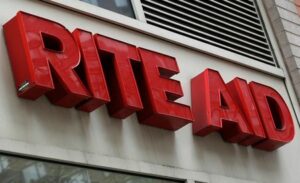(Reuters) -Just when it looked like rate cuts were coming any minute now, inflation has reared its head and the strength of the dollar is forcing other central bankers to protect their currencies and reconsider their policy choices.
What appeared to be a dead cert a few weeks ago – the Federal Reserve embarking on a series of markets-friendly rate cuts in the first half of the year – is now looking unlikely, just as earnings season ramps up.
Here’s what’s coming in markets next week from Kevin Buckland in Tokyo, Rae Wee in Singapore, Ira Iosebashvili in New York and Dhara Ranasinghe and Naomi Rovnick in London.
1/DRAWING A LINE
Japan’s finance minister wants to stem the yen’s slide to a 34-year low, potentially without spending anything on intervention.
Shunichi Suzuki held an unprecedented trilateral dialogue with Treasury Secretary Janet Yellen and his Korean counterpart, yielding a U.S. acknowledgement of the Asian nations’ “serious concerns” about the steep drop in their currencies.
Those “concerns” will also inform a G7 statement, reaffirming the undesirability of excessive currency swings, something the G7 hasn’t done since October 2022.
Japanese officials might welcome such an outcome, as intervention would very much be swimming against the monetary policy tide.
Fed Chair Jay Powell has signalled U.S. rate cuts will likely take longer than expected, while Bank of Japan officials have indicated hikes at home will be extremely slow, which could be confirmed at their policy meeting starting April 25.
2/STILL STRUGGLING
Asian currencies have been battered by a relentless dollar for most of the past two years and it’s getting worse.
In one day, Indonesia’s rupiah returned from the Eid al-Fitr holidays to a four-year trough, the Korean won slid to its weakest in over a year, while the Indian rupee and Vietnam dong tumbled to record lows.
The dollar is charging ahead and the U.S. economy is unfazed by high interest rates, so emerging Asia central banks are in for a rough time.
Benign inflation in the region and softer growth suggest policymakers may be justified in cutting rates, but going before the Fed would only hurt their currencies further. Bank Indonesia meets April 23-24, and analysts see a growing risk of a rate hike from the central bank that was once expected to be among the first in the region to cut.
3/INFLATION WATCH
Sticky U.S. inflation and oil up 14% this year means price pressures are back in focus.
So, when the flash PMIs of April business activity from across global economies are released, attention will fall on any signs that inflation, especially in the services sector, is returning.
The March U.S. PMI showed a measure of prices paid by businesses for inputs hit a four-year low, euro area inflation meanwhile slowed to 2.4% in March.
Yet the latest U.S. inflation numbers and Middle East tensions keeping oil high means investors are nervous. A key gauge of market euro area inflation expectations has touched its highest since December.
The PMIs could also show the euro zone isn’t doing too badly. The March PMI showed activity expanded for the first time since May.
4/BIG TECH REPORTS
Earnings from the market’s tech and growth heavyweights and another dose of inflation data are on the docket, as investors face a wobbling rally in U.S. stocks and fading expectations that U.S. rates will drop much this year.
Electric vehicle maker Tesla reports earnings on Apr. 23, Facebook-parent Meta on the 24th and Microsoft and Google-parent Alphabet on the 25th.
Investors also get another look at price data on April 26 with the personal consumption expenditures (PCE) price index, which economists polled by Reuters expect to have risen 0.3% in March.
5/FROM NAUGHTY TO NICE?
European banks are finally moving off the naughty list, with the STOXX banks index up 12% so far in 2024.
Interest rate rises gave banks a windfall in 2023 by widening the gap between what they charged for loans and paid to savers. Investors will scrutinise upcoming quarterly earnings reports to gauge how much European Central Bank rate cuts, predicted to start in June, will cost the lenders.
Barclays forecasts zero earnings growth for European banks in 2024, then a modest 5% gain in 2025.
But JPMorgan recommends a less pessimistic overall stance on European bank stocks, while its credit analysts view these lenders as less exposed to the troubled commercial property sector than U.S. peers.
BNP Paribas, Deutsche Bank and Barclays are among the big guns reporting in the coming week.
(Compiled by Amanda Cooper; Graphics by Pasit Kongkunakornkul, Prinz Matgulis, Riddhima Talwani and Vineet Sachdev; Editing by Edwina Gibbs)




